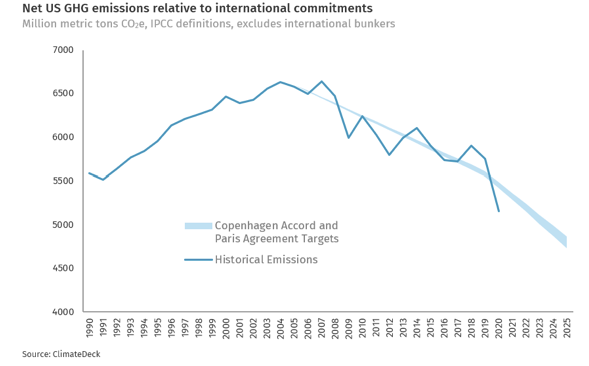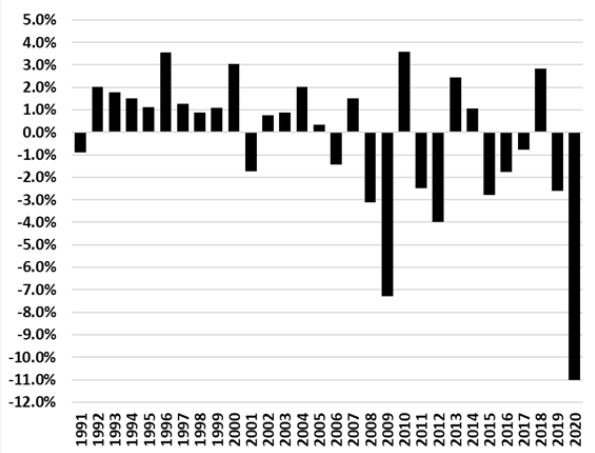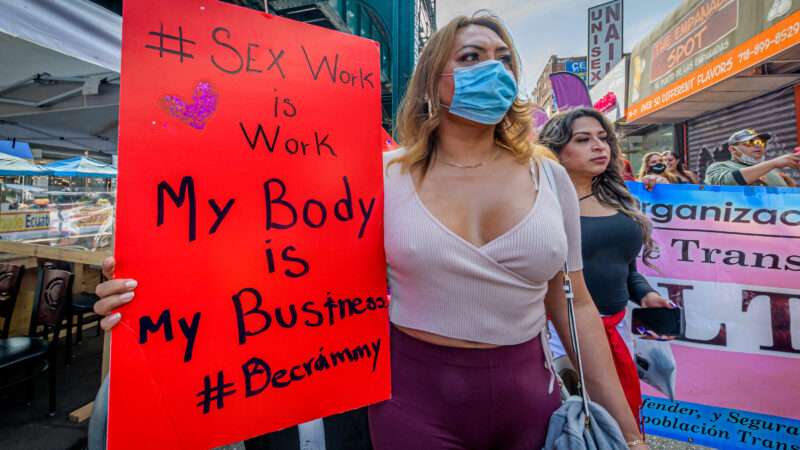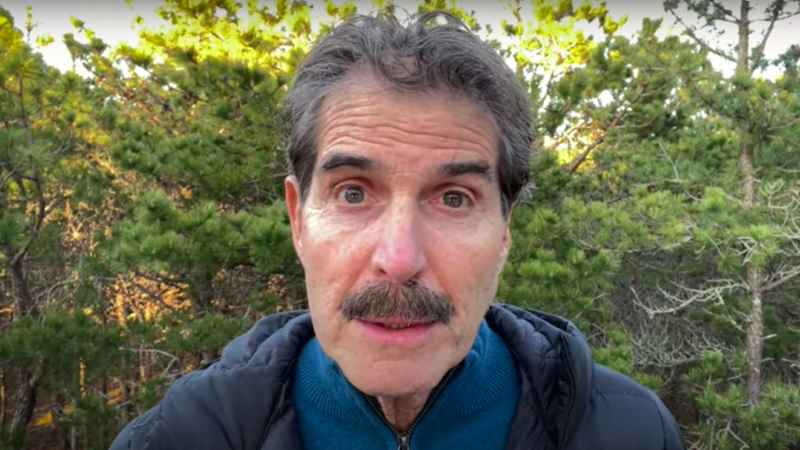Daunte Wright, who was shot and killed this month by a Brooklyn Center, Minnesota, police officer who apparently mistook her handgun for a Taser, was pulled over because of an expired registration sticker. But after the cops stopped him, they also noted that the air fresheners hanging from his rearview mirror violated Minnesota’s traffic code, which by itself would have been legally sufficient to detain him. That rule illustrates how easy it is for police to justify traffic stops by citing a petty civil violation, even when it is merely an excuse for conducting a criminal investigation that would otherwise be unconstitutional.
State transportation codes include hundreds of rules governing the operation and maintenance of motor vehicles. Many of them are picayune (e.g., specifying acceptable tire wear, restricting window tints, and dictating the distance from an intersection at which a driver must signal a turn) or open to interpretation (e.g., mandating a “safe distance” between cars, requiring that cars be driven in a “reasonable and prudent” manner, and banning any windshield crack that “substantially obstructs the driver’s clear view”).
“The upshot of all this regulation,” University of Toledo law professor David Harris observed in a 1998 George Washington Law Review article, “is that even the most cautious driver would find it virtually impossible to drive for even a short distance without violating some traffic law. A police officer willing to follow any driver for a few blocks would therefore always have probable cause to make a stop.”
In the 1996 case Whren v. United States, the Supreme Court said such stops are consistent with the Fourth Amendment’s ban on unreasonable searches and seizures even when the traffic violation is merely a pretext for investigating other matters. If an officer stops a car for a traffic violation in the hope of finding illegal drugs or seizable cash, for instance, that is perfectly constitutional, even without any evidence of criminal conduct.
The arbitrary rule that Daunte Wright violated shows how even the pettiest violations can lead to interrogation, searches, arrests, and violent, potentially deadly confrontations. It says “a person shall not drive or operate any motor vehicle with…any objects suspended between the driver and the windshield.”
The law specifies six exceptions: sun visors; rearview mirrors; electronic toll collection devices; “driver feedback and safety monitoring equipment when mounted immediately behind, slightly above, or slightly below the rearview mirror”; “global positioning systems or navigation systems when mounted or located near the bottommost portion of the windshield”; and “identifying device[s]” used by commercial transportation services “when the device is mounted or located near the bottommost portion of the windshield.”
Air fresheners did not make the list, meaning they are categorically prohibited, even when they are designed to be hung from rearview mirrors. Graduation tassels, rosaries, crucifixes, and fuzzy dice are likewise verboten, so any of them is a license for an armed agent of the state to forcibly interrupt a Minnesota driver’s travels.
Do such items obstruct a driver’s vision more than an electronic device mounted “slightly below the rearview mirror” or “near the bottommost portion of the windshield”? Probably not. Minnesota legislators nevertheless thought it made sense to let cops stop drivers based on nothing more than small objects hanging from their rearview mirrors, including small objects expressly sold for that purpose.
Minnesota is hardly unique in that respect. The New York Times reports that most states have similar laws. Some of them are less categorical than Minnesota’s rule. Maryland, for example, prohibits dangling objects only when they “interfere with the clear view of the driver through the windshield,” although that stipulation still gives police a lot of discretion. More important, Maryland’s law specifies that “a police officer may enforce this paragraph only as a secondary action when the police officer detains a driver of a motor vehicle for a suspected violation of another provision of the Code.”
Until a few years ago, Maryland allowed primary enforcement of that provision. Legislators changed the statute in 2017, thereby slightly reducing the potential for police harassment of drivers who pose no threat to public safety.
The Times describes two incidents that illustrate that danger.
After a La Paz County, Arizona, sheriff’s deputy stopped Phil Colbert in 2019, Colbert wondered why. “You can’t have anything hanging from your rearview mirror,” the deputy informed Colbert (who recorded the encounter on his cellphone) before grilling him about drug use. Maybe the deputy surmised that the air freshener was meant to cover the odor of marijuana, or maybe he routinely asks drivers such questions in the hope of finding contraband to justify an arrest. Either way, Colbert suddenly became a criminal suspect simply because he unknowingly flouted Arizona’s traffic code, which prohibits any “object” attached to a car “in a manner that obstructs or reduces a driver’s clear view through the windshield.” As in Minnesota, the exceptions do not include air fresheners
Although Colbert, now 23, got off with a warning, things could have turned out much worse. If the deputy had ready access to a drug-sniffing dog, he could have used it to justify a search that would have been inconvenient and humiliating even if it turned up nothing incriminating. In practice, this judicially approved end run around the Fourth Amendment requires nothing more than a handler’s claim that the dog “alerted” to the car.
If the deputy came across a substantial amount of cash, he could have seized it based on the bare allegation that it was somehow related to criminal activity. If the deputy decided to order Colbert out of the car, which the Supreme Court has said is allowed during any traffic stop, any objection or perceived resistance could have led to violence, an arrest, or both. All because of that air freshener.
Brittany Mixon, now 35, had a similar experience as a high school senior in 2003. After an officer pulled her over in Galesburg, Illinois, ostensibly because of her air freshener, he immediately asked whether she owned the car she was driving, implying that it might be stolen. “He kept asking me questions like he wanted to trip me up,” Mixon told the Times. To this day, she keeps her rearview mirror pristine and becomes anxious when she rides in a car whose owner has hung anything there.
Colbert and Mixon are both black. Is that relevant? Studies of traffic stops, which have repeatedly found that black people are especially likely to experience such harassment, suggest it is. But even if you are unimpressed by the evidence of racially skewed enforcement, the fact that cops have the legal authority to hassle people for such trivial reasons is more than a little troubling.
I have never hung an air freshener (or anything else) from my rearview mirror, but it never occurred to me that doing so might invite a cop to pull me over. Texas, where I live, authorizes arrests even for minor traffic offenses such as failing to buckle your seat belt, which the Supreme Court also has said is constitutionally kosher. That means you can go to jail for violations that are not punishable by jail. Can Texas drivers be arrested for air fresheners?
Under the Texas Transportation Code, it is a misdemeanor to drive a car with an “object” that “obstructs or reduces the operator’s clear view,” but only when that object is “placed on or attached to the windshield or side or rear window.” KPRC, the NBC station in Houston, reports that Texas currently has no law that explicitly forbids “hanging items such as air fresheners, graduation tassels and chains around your rearview mirror.” Whew.
Texas cops, of course, have plenty of other excuses to pull people over, as do cops throughout the country. Incidents like the senseless deaths of Daunte Wright, Philando Castile, Walter Scott, and Sandra Bland suggest the hazards of giving police the power to mess with just about anyone who dares to travel in an automobile.
from Latest – Reason.com https://ift.tt/32D673Y
via IFTTT








